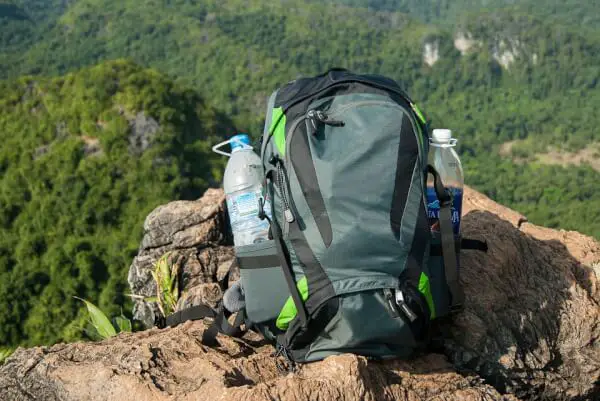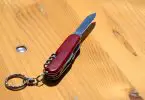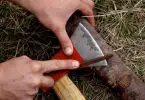“What is a daypack?”, you ask? Excellent question! As a budding outdoorsman, the best thing you can do to help you get your bearings is soak up information. Whether you want to get into mountaineering, or bouldering, or simply enjoy going for a hike every weekend–always ask questions.
You decide what you want to do, and then thankfully in the modern era the internet is there to lend a helping hand as you learn what gear you need for each activity. Then you realize: what sort of “gear” do I need to stow my gear?
See also: Best Waterproof Hiking Backpack: Choosing the Right Backpack for Your Outdoor Activities
This is where, for many different applications, a well-chosen daypack comes in. In this article we’re going to get down and dirty; I’ll go over the basics including what a daypack is, how to pick one out, and even how to pack it. You’d be surprised how detailed the conversation around daypacks can get–one read isn’t going to make you an expert but you’ll at least have an idea of what you’re looking for and which questions to ask when you go shopping.
What Is A Daypack?
A daypack is a sort of stripped-down, simplified version of the type of pack you would use on multi-day excursions. It’s meant to be a durable solution to keep all the gear with you that would need to go on a single day trip.
This can be applied to hiking longer trails, or simply spending the day out at a remote crag and honing your climbing skills. Daypacks can stow all your things without the massive size and bulky framework you’d find in a pack meant for longer trips.
Oh…You Mean A Backpack?
Nope, not that either. Think of a daypack as the ultimate middle ground. The simple backpack you used in high school isn’t quite as rugged or specialized as a daypack.
While there are a variety of options and you can easily customize the sort of pack you buy to your specific need (discussed below in the mini buyer’s guide), the general idea is that a daypack is the bigger, stronger cousin of a knapsack, but not as much of a pain to lug around as the pack you’d take on a month long trip.
After all, doesn’t it make sense that if you’re planning to be gone for an eight hour hike, you wouldn’t choose a pack sized for backpacking your way across the entire Appalachian Trail?
Why Should I Use One?
Alright, if you still don’t see the usefulness of a daypack, picture the alternative. You likely won’t choose to take an oversized pack because they can quite honestly be a pain to lug around unless they’re being truly useful. This means you’re going to grab your old backpack.
You know the one – that ratty old thing you’ve had forever, just sitting in the corner of your closet. So old, you can’t even remember where you bought it. But you tell yourself that none of that really matters; it’s just a sack to hold your stuff and you’ll only be gone for a few hours.
Two hours into your hike your back is killing you because the old backpack is sagging, sitting too low on your back. You tug on the straps, trying to adjust their length so that the load will sit higher, and the flimsy stitching gives way, dumping all your gear into the dirt. Then you finally ask yourself why you spent so much time agonizing over the choice between a titanium or ceramic spork, but never gave your pack a second thought.
Daypacks are built to bear weight without making you sacrifice your spine to do it. They’re specifically designed for different outdoor activities, and those little conveniences can make your day a whole lot more enjoyable. They will easily stash all your gear, with the room leftover to be sensible and pack those “just in case” supplies. Excuse the cliché but when it’s just you and nature, safe is definitely better than sorry.
Mini Buying Guide:Factors To Consider
Hopefully you’re starting to see the value of investing in a quality daypack. If you’ve ever gone to a store that stocks a decent selection of packs, though, you know that the sheer number of choices can be overwhelming.
The different labels and options available can be especially confusing when shopping for your first daypack, as you don’t quite know yet what your preferences are. This section will take a look at some basic characteristics of daypacks that you’ll want to consider to help make that initial purchase as smooth as possible.
Size Matters…Really!
One of the first things you’ll want to consider can also help you narrow the field pretty quickly, depending on your needs: size. In terms of fitting a pack to your stature, daypacks are less complicated than trekking packs because that don’t have as much physical structure and can be adjusted to an extent.
Most daypacks will be offered in a “small/medium” or “medium/large” size; if you’re particularly tall or short that may force you to one option over the other, but for most people it just comes down to preference and making sure the pack can be adjusted to sit properly on your back. The other aspect of size is the actual capacity of the pack.
Standard daypacks are about 30L, as that’s usually sufficient for day-long trips. However, if you’re a climber you’ll probably want something smaller to stay out of the way;if you’re scrambling across a glacier you may need something bigger to hold all the necessary gear.
Flap Style:Brain or Brawn?
The flap is the part of the daypack that allows you to access the large inner compartment where you will be storing most of your gear. The design of this aspect of your daypack will place it one of two categories: top loading or side loading. Top loading daypacks will have a flap on the very top of the pack, and the pack’s contents must be added one by one. This style is similar to an open can.
While it can be difficult to organize smaller items in this pack, or access something specific without having to unpack the whole thing, it is a great option for larger or oddly shaped gear as top loaders can be “overloaded” more easily than side loading daypacks.
Side loading packs have a large flap that typically runs the height of the pack and opens horizontally. This style is what you would be familiar with as used on a traditional backpack.
Side loaders are great for ease of access – if you know that you’ll be stopping and going into your pack for this or that relatively frequently, then this can be a good option. They’re also great for staying super organized in your packing method, as a side loader gives you a greater degree of access to the pack’s contents.
Occasionally you’ll be able to find hybrid packs that offer both options, but for the most part you’ll have to decide which qualities are more important to you and stick with that flap style. Check out our article review of the besst daypack
Don’t Get Too Attached
Once you start to really delve into your daypack buying mission, you’ll notice that in addition to the major questions like size and flap style, there are a ton of little options. I swear, sometimes it seems like these packs could practically hike without you!
You’ve got mesh pockets to put water bottles or other frequent use items, hidden compartments in the shoulder straps to hold your earbuds, zippered pouches built into hip straps to stow still more small items, and most packs are even compatible with hydration packs and have space specifically set aside for the purpose of putting in a water reservoir.
It’s important to keep in mind that more isn’t always better. For instance, if you’re a climber, you’ll want a pack that is more minimalist and possibly one that doesn’t include hip stabilizer strap at all. While hip straps are a great boon to hikers, it would drastically limit your mobility as a climber.
Conversely, if you need to take large items like skis or an ice axe with you, you’ll probably want a daypack that includes a bungee system on the outside as these can be used to lash gear to the outside of the pack.
I’ve Found A Daypack…What Do I Put In It?
You’ve found your pack! That’s half the battle. Just as there were special factors to consider when choosing to use a daypack and choosing to buy one, packing can be a bit of a science too. What you pack–and even how you pack it–can make or break your enjoyment of the day trip you’ve planned.
Just as with the buying guide above, these are merely broad suggestions and you may want to tailor them to your specific needs.
In the 1930’s a Seattle based organization for climbers coined the “Ten Essentials”, items they believed you should always have on you when in the wilderness. The idea turned out to be quite popular and was adopted as a good rule of thumb for outdoorsman.
1930’s “Ten Essentials”
- Map
- Compass
- Sunglasses and Sunscreen
- Change of Clothes
- Headlamp or Flashlight
- First Aid Kit
- Firestarter
- Matches
- Knife
- Additional Food
The idea was that, in addition to all your activity-specific gear, having this stuff with you meant you were prepared for unexpected events. Of course, conditions and available technology have certainly changed since this list was created. Good thing our trusty Seattle climbers updated the list! In recent years they’ve adopted what’s called a systems based approach. This means the items are grouped by category, as shown in this table:
| System | Item Suggestions |
| Navigation | Map, compass, GPS, PLB device |
| Sun Protection | Sunglasses, sunscreen, UPF-rated clothing |
| Insulation | Thermals, vest or jacket, socks |
| Illumination | Flashlight, headlamp, glowsticks |
| First Aid | Mini first aid kit |
| Fire | Firestarter, lighter, waterproof matches |
| Repair Kit | Tools, patches, duct tape, mini sewing kit |
| Nutrition | At least one extra day of food |
| Hydration | Water bottles or reservoir, purification system |
| Emergency Shelter | Tarp, bivvy, space blanket |
While the new systems based approach can get a bit complicated if you try to pack every single item that applies, it can be useful as a way to remember important types (systems) of gear to bring.
Rather than recommending a specific type of repair kit or first aid, etc for every outdoorsman regardless of the planned activity, what they’ve done here is suggest which bases you should be sure to cover and then left it up to you to customize how you do that based on your location and planned activities.
So when you are packing you can trim down the list based on what you really will need – and as always, don’t forget to expect the unexpected and pack at least a minimal amount of emergency supplies/rations.
Order Matters
Once you’ve got your pack and all your gear selected, it’s time to pack. Now you could just dump all your stuff into the bag and go. It’s tempting, especially if you’ve got an easy-to-stuff top loader daypack.
You’ve spent all this time agonizing over what special features you need in a daypack, what size you need, what gear you need, what emergencies to prepare for, and you’re probably just itching to get outside at this point. Bear with me for just a while longer. If you miss this last step and don’t take care in packing your bag, you will most definitely regret it.
When stowing your gear in your pack, you want to be sure to put the heaviest items at the top of your back, and closer to your spine rather than the open air behind you. This is a simple rule, but what it does is shift the center of gravity for the pack, meaning that you will need to bend over only slightly to balance yourself.
Even when you have a pack that fits right and sits where it should on your back, loading it so that the weight is pulling you backwards means you have to lean relatively far forward to compensate, which is what ends up causing back pain and poor posture. This trick relieves those issues, freeing you to simply enjoy what you’re doing.
To pack things up…
Hopefully you’ve found this guide helpful, and by now have all your questions about the daypack basics covered. Keep in mind that there is no one “best” daypack. Everything depends on your needs, goals, and which features you will personally find most useful. The best advice I can give you is to go try some out!
Take some time to decide what you’ll primarily be using your daypack for, and what’s important to you. Then go to a store, pick out a few good options, fill ‘em up with gear, and see how they feel. Now that you understand the importance of a daypack, you’ll be able to make an informed decision on a purchase that will really enhance your enjoyment of those favorite day trips.
See more tips on how to choose the best daypack for your next trip – definitely an important read!
Featured Image Source: https://pixabay.com/photos/backpack-hiking-backpack-hiking-2239724/








